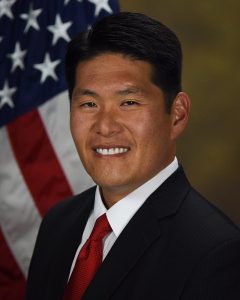The U.S. Forest Service announced Friday it’s taking emergency action to save giant sequoias by speeding up projects that could start within weeks to clear underbrush to protect the world’s largest trees from the increasing threat of wildfires.
The move to bypass some environmental review could cut years off the normal approval process required to cut smaller trees in national forests and use intentionally lit low-intensity fires to reduce dense brush that has helped fuel raging wildfires that have killed up to 20% of all large sequoias over the past two years.
“Without urgent action, wildfires could eliminate countless more iconic giant sequoias,” Forest Service Chief Randy Moore said in a statement. “This emergency action to reduce fuels before a wildfire occurs will protect unburned giant sequoia groves from the risks of high-severity wildfires.”
Also Read: Wildfires threaten Athens’ hillside suburbs for second day
The trees, the world’s largest by volume, are under threat like never before. More than a century of aggressive fire suppression has left forests choked with dense vegetation, downed logs and millions of dead trees killed by bark beetles that have fanned raging infernos intensified by drought and exacerbated by climate change.
The forest service’s announcement is among a wide range of efforts underway to save the species found only on the western slope of Sierra Nevada range in central California. Most of about 70 groves are clustered around Sequoia and Kings Canyon National Parks and some extend into and north of Yosemite National Park.
Also Read: White House gives federal firefighters pay raise as wildfire season nears
Sequoia National Park, which is run by the Interior Department and not subject to the emergency action, is considering a novel and controversial plan to plant sequoia seedlings where large trees have been wiped out by fire.
The Save Our Sequoias (SOS) Act, which also includes a provision to speed up environmental reviews like the forest service plan, was recently introduced by a bipartisan group of congressmen including House Republican leader Kevin McCarthy, whose district includes sequoias.
The group applauded Moore’s announcement Friday but said in a statement that more needs to be done to make it easier to thin forests.
“The Forest Service’s action today is an important step forward for Giant Sequoias, but without addressing other barriers to protecting these groves, this emergency will only continue,” the group said. “It’s time to codify this action by establishing a true comprehensive solution to fireproof every grove in California through the SOS Act and save our sequoias.”
Work planned to begin as soon as this summer in 12 groves spread across the Sequoia National Forest and Sierra National Forest in would cost $21 million to remove so-called ladder fuels made up of brush, dead wood and smaller trees that allow fires to spread upward and torch the canopies of the sequoias that can exceed 300 feet (90 meters) in height.
The plan calls for cutting smaller trees and vegetation and using prescribed fires — intentionally lit and monitored by firefighters during damp conditions — to remove the decaying needles, sticks and logs that pile up on the forest floor.
Some environmental groups have criticized forest thinning as an excuse for commercial logging.
Ara Marderosian, executive director of the Sequoia ForestKeeper group, called the announcement a “well-orchestrated PR campaign.”
He said it fails to consider how logging can exacerbate wildfires and could increase carbon emissions that will worsen the climate crisis.
“Fast-tracking thinning fails to consider that roadways and logged areas … allows wind-driven fires because of greater airflow caused by the opening in the canopy, which increases wildfire speed and intensity,” he said.
Rob York, a professor and cooperative extension specialist at forests operated by the University of California, Berkeley, said the forest service’s plan could be helpful but would require extensive followup.
“To me it represents a triage approach to deal with the urgent threat to giant sequoias,” York said in an email. “The treatments will need to be followed up with frequent prescribed fires in order to truly restore and protect the groves long-term.”
The mighty sequoia, protected by thick bark and with its foliage typically high above the flames, was once considered nearly inflammable.
The trees even thrive with occasional low intensity blazes — like ones Native Americans historically lit or allowed to burn — that clear out trees competing for sunlight and water. The heat from flames opens cones and allows seeds to spread.
But fires in recent years have shown that although the trees can live beyond 3,000 years, they are not immortal and greater action may be needed to protect them.
During a fire last year in Sequoia National Park, firefighters wrapped the most famous trees in protective foil and used flame retardant in the trees’ canopies.
Earlier this month, when fire threatened the Mariposa Grove of giant sequoias in Yosemite National Park, firefighters set up sprinklers.
Flames burned into the grove — the first wildfire to do so in more than a century — but there was no major damage. A park forest ecologist credited the controlled burns with protecting the 500 large trees.






